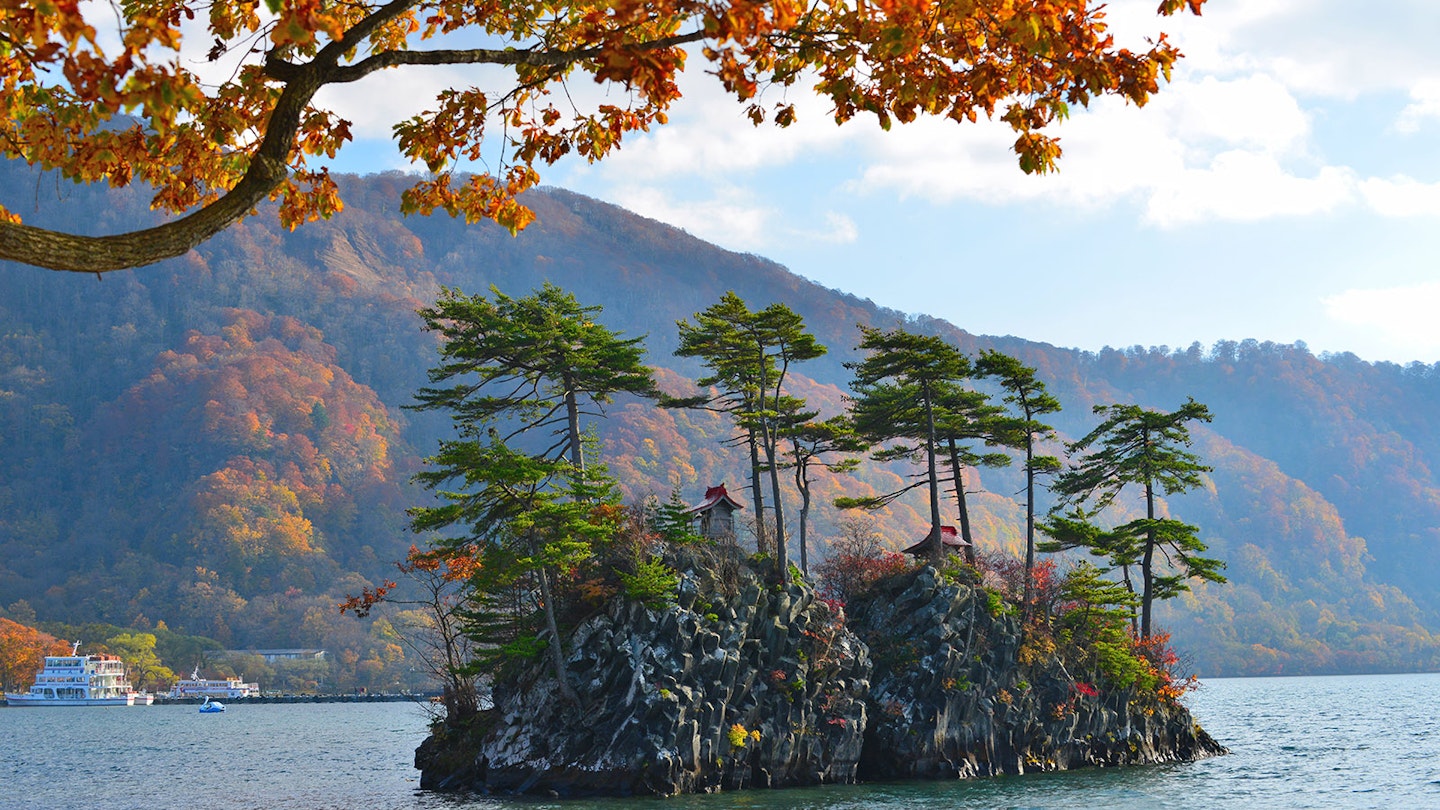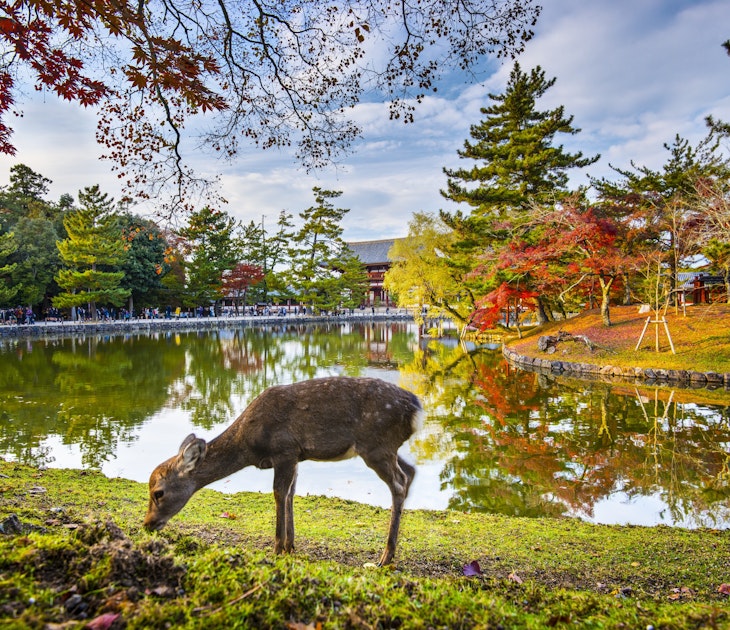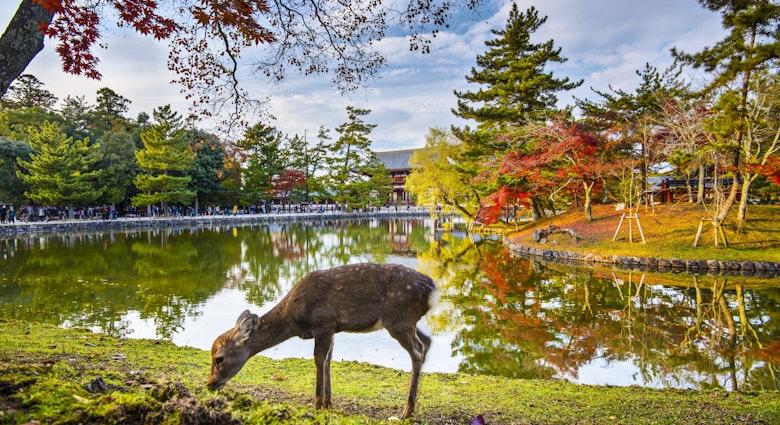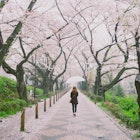Tohoku, Japan's far north, is a land of elemental nature that hosts a wealth of fascinating ancient customs, mythical legends and long-held traditions. The people who call Tohoku home understand the value of a moment and the preciousness of life.
Journeys to this less-frequented part of Japan – where Tokyo's fast pace and urban sprawl seems worlds away – offer the adventurer the opportunity to wander amongst breathtaking natural beauty and historical sites; to sample traditional ways of living in ancient Japanese villages, and to deepen their spirituality and experience the kindness of strangers. These are just some of the reasons that Tohoku was voted a top region in Lonely Planet's Best in Travel 2020.

Samurai treasures
Originally home to the indigenous Emishi people, Tohoku has a long feudal history. It was settled by various samurai clans between the 7th and 9th centuries, much later than in central and southwestern Japan.
Established in 1620 by Ashina Yoshikatsu, the lord of the Satake clan, the buke-yashiki in Kakunodate is arguably the country's best-preserved samurai district. Many of its beautiful, traditional buildings now house museums recalling life in feudal times, whilst others have "open doors" and are free for visitors to wander about. The main street of the district is lined with ancient cherry trees, which make for a spectacular sight in hanami (cherry-blossom viewing) season: have your camera at the ready.
The town of Hiraizumi in Iwate prefecture was Tohoku's first Unesco World Cultural Heritage listing and is famed for its handsome historic architecture, courtesy of the gold-mining Fujiwara clan who ruled here in the 12th century. Hiraizumi's main attraction is the Chūson-ji temple complex, which once housed over 300 buildings including 40 separate temples. The complex was ravaged by fire in 1337 but two of its original buildings survive.
In Fukushima prefecture, the sprawling township of Aizu-Wakamatsu was once a feudal capital and its sights, including a number of famous sake breweries, are dotted around town. Must-sees are the Aizu buke-yashiki and the curiously crooked Sazae-do temple building.

The mythical and the magical
Tohoku is also a place of myth and legend, with a long spiritual tradition. It's where you'll find the sacred land of Dewa Sanzan. According to in the Shugendō folk religion, Dewa Sanzan’s three peaks – Mt Haguro, Mt Gassan and Mt Yudono – represent birth, death and rebirth, respectively. Each year, tens of thousands of pilgrims flock here to journey with the yamabushi (mountain priests) along the well-trodden trail traversing the three mountains. Why not join them?
Not far away, you’ll find the village of Risshaku-ji (Yamadera), immortalised by the itinerant Haiku master Matsuo Bashō in his classic "The Narrow Road to the Deep North". It is well worth climbing the 1000 stone steps to the top of the temple for stunning views and, if you realise along the path that it's all about the journey and not the destination, you'll be one step closer to attaining enlightenment.
On the Shimokita Peninsula, almost at the very tip of Japan's main island, Honshū, you'll find the hauntingly beautiful Osorezan-bodaiji temple, honouring Jizō Bosatsu, protector of children and a much-loved deity in Japanese mythology. After the 2011 earthquake and tsunami, the temple became a place of healing and hope for many families. Visit with an open heart and mind and you will be moved by its beauty, sadness and serenity.
The Tōno Valley has long been a place of myth and legend, made famous by writer Yanagita Kunio's classic Legends of Tōno, one of many records of many local stories about yokai (ghost and spirits), including the legendary kappa (water imp). When in town, be sure to venture up to the mysterious Gohyaku Rakan, or increase your chances of finding true love, at the Unedori Sama shrine.

Spectacular nature
As one of the least densely populated areas of Japan, Tohoku is known for its mountainous terrain. Here, you'll never be far from its volcanic peaks and dense forests. In the warmer months, visitors to the Towada-ko (Lake Towada) region, located within the Towada-Hachimantai National Park, are rewarded with beautiful vistas and the chance to spend time on the chilly, crystal clear waters. But the area's best-known attraction is Matsushima, a stunning collection of hundreds of wind and sea-battered islands.
Sublime onsen
If you consider yourself an onsen aficionado, visits to Tohoku's more unique and remote mountain hot springs should be considered a high priority. Whilst it might take a little more effort to get here, you'll never forget that night you spent soaking your troubles away beneath a carpet of stars, or retreating to your antique room refreshed and ready to dine on a sumptuous kaiseki banquet of local cuisine.
In the hills above Tazawa-ko (Lake Tazawa) at the end of a mountain road, you'll find Nyūto Onsen, a small selection of exceptional onsen that offer indoor, outdoor and mixed bathing. Plan to overnight at one of the tranquil ryōkan (traditional Japanese inn) here. Eight onsen can be visited on a day-pass.
Plopped in the middle of the Hakkōda-san (Mt Hakkoda) section of the Towada-Hachimantai National Park in Aomori prefecture, you'll find Sukayu Onsen, famed as one of Japan's best traditional baths. The water is hot and acidic and the bathing mixed, housed within a creaky wooden bathhouse that has endured scores of lonely, frigid winters.

Unforgettable festivals
The people of Tohoku celebrate a multitude of proud traditions dating hundreds of years, almost all of which culminate in some of Japan's most rousing summer celebrations. One of the biggest festivals in the region, Sendai Tanabata Matsuri, drapes the city in thousands of colourful streamers and paper decorations to celebrate an old Chinese legend. In the legend, two stars, Vega and Altair, fall in love, but their love was not destined to be.
Aomori Neputa Matsuri and Hirosaki Neputa Matsuri both feature elaborate illuminated floats paraded through the streets to the accompaniment of taiko drums and traditional song and dance. Equally mesmerizing, Akita Kantō Matsuri sees hundreds of townsfolk balancing beautiful illuminated lanterns on giant poles as they parade through the city streets to the beat of taiko drumming groups. Plan on joining in the festivities if you can!
You might also like:
6 things you need to know before travelling to Japan right now
Top 20 free things to do in Tokyo
Everything you need to know about visiting an onsen in Japan
Article first published in March 2018, and last updated in February 2020











